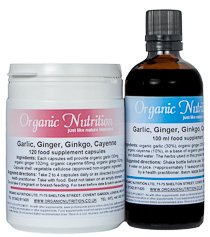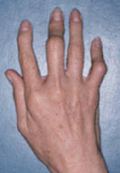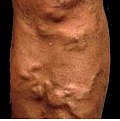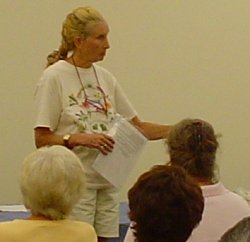Information about common blood circulation problems - Page 3
Circulatory problems can vary from quite mild to severe. Some symptoms can include numbness in the arms or legs leading to paresthesia or thrombosis (see below) at the opposite end of the spectrum, which are more severe.
What is Paresthesia? - Causes, Symptoms & Treatment
Tingling in the hands and feet is called paresthesia which literally means Greek para meaning "beside" or abnormal and aisthesia, meaning sensation.
One of the first things you may notice as the circulation starts to dimish to a body part is a tingling sensation. Paresthesia is a sensation of tingling, pricking, or numbness of a person's skin with no apparent long-term physical effect. It is also called ‘pins and needles’ or the feeling of a limb going to sleep. The feeling of having a foot "fall asleep" is a familiar one. This same combination of numbness and tingling can occur in any region of the body and may be caused by a wide variety of disorders.
Other types of paresthesia include feelings of cold, warmth, burning, itching, and skin crawling. Paresthesia occurs when an area of the body loses its normal sensation to touch.
Usually paresthesia is short-lived and can occur when sustained pressure has been applied to a nerve, which inhibits its function. Removing the pressure from the limb returns sensation to the body part where paresthesia has occurred.
Most common parts of the body to get affected
While numbness can occur anywhere on the body, it’s most common in the arms, hands, legs and feet. Numbness can also be accompanied by tingling, pins and needles, and burning skin sensations. Numbness in the arms and legs can be caused by remaining in one position, whether this is standing, sitting or lying down for a long time.
This can be due to work or if you are unwell and bed-bound for a period of time or if there is pressure on a nerve from a resultant injury. For example, some back injuries can cause numbness in the legs or feet, and a neck injury can cause numbness in the arms and hands. Pressure on the spinal nerves can cause limb numbness.
Sometimes one’s arms or legs feel numb to the touch. It may also feel like it has been frozen with anaesthesia. This numb patch may be small or encompass many parts of the body such as part of your arm or the whole arm, part of your foot or the whole leg.
Thrombosis and blood clots
One of the more extreme problems related to this is called thrombosis. Lack of movement in certain areas can result in blood clots which can become serious. These clots are also known as thrombosis, from the Greek word from ‘thrombos’ meaning a clot. Exercise helps to stimulate the muscles which in turn causes the fluids in the vessels to move more and faster. Sitting down with one’s legs bent for long periods of time can increase the chances of thrombosis.
For example, when travelling in airplanes, especially on long-haul flights, it is advisable to drink plenty of water, wear loose garments and also get up from your seat from time to time to exercise – also consider doing some gentle leg and feet exercises or stretches to stimulate flow. Walking on the spot or flexing one’s feet even under the seat, may help.
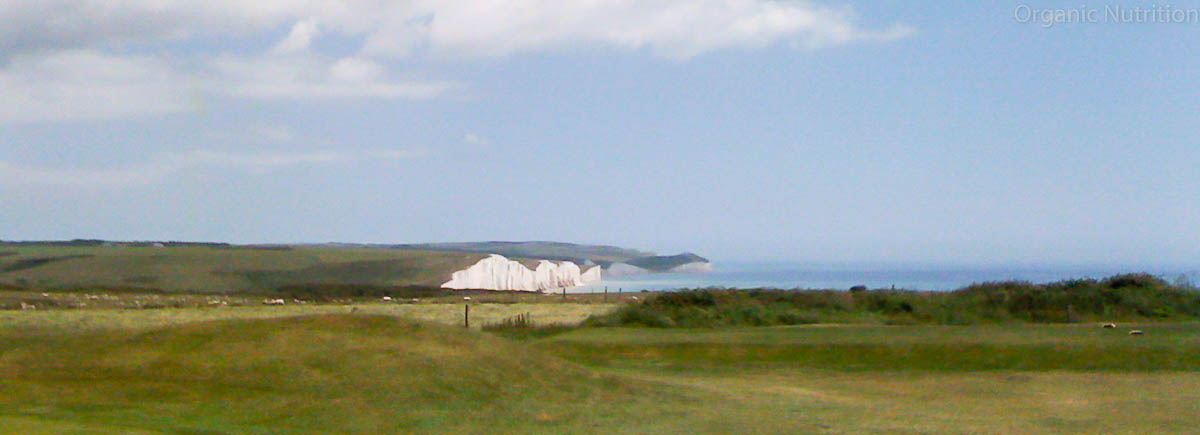
Regular Physical Exercise
There are more simple ways to improve your circulation. Exercise increases the speed of oxygen reaching the cells and also increases the speed of getting rid of waste substances from these cells. Exercise works the muscles of the body including the heart muscle.
Lying, sitting or standing in one position for prolonged periods of time contributes to lessened flow as the blood gets "stagnant" in the areas of pelvis and legs causing aching or cold legs, feet and hands.
Avoid Wearing Tight-Fitting Clothes
Try not to wear tight-fitting clothing all day, as it tends to reduce blood flow. Tight shoes can restrict this flow too. It is best to avoid wearing tight-fighting clothes for long periods of time. Also, tight jeans and shoes can reduce the flow of blood to the legs and feet as well as constricting the vessels leading to the important organs in the pelvic region.
Try to avoid or stop Smoking
Inhaling toxic chemicals and smoke constricts blood flow to the heart and brain and may poison the body with harmful free-radicals and other dangerous substances.
The Heart muscle - Tips to make it stronger:
The heart has the hardest working muscles in the human body - these are the cardiac muscles. Without doubt it is one of the three most important organs in the body along with the brain and lungs. It has been proven that it can be affected by what we eat and so it is vital to eat as healthily as possible.
The human heart continuously pumps the red stuff through our body to provide oxygen and nutrients to all organs, tissues and cells. It also removes carbon dioxide and other wastes. On average, the it beats 72 times per minute or 4,320 times per hour which is approximately 103,680 per day. This is a phenomenally hard working muscle, pumping approximately 7,200 litres of blood through our body each day.
We have about 650 muscles in our body and these make up approximately half of our body weight.
Cardiac muscle only exists in our hearts and works automatically and constantly. It gets its oxygen and nutrients from blood flowing through the coronary arteries located within the heart muscle itself.
The Heart itself needs its own oxygen!
Just like other organs or muscles of the body, the heart muscle itself needs oxygen and nutrients to live and function properly. Surprisingly, it does not get much of its oxygen and other nutrients from the blood flowing inside it. In fact, it gets most of its nutrients from the main arteries which include the left coronary artery and right coronary artery. These arteries receive blood from the aorta.
A common problem that is becoming more well known about is that when the body starts lacking essential vitamins, minerals and other compounds, it leads to our blood vessels becoming more fragile. This is a vicious circle and makes things worse. It is important that we get sufficient antioxidants from fresh produce, oily fish and whole grains. These help reduce toxic build ups in the entire body.
Certain foods can keep your heart healthy
Omega-3 fatty acids – fish oils are known for lowering the amount of harmful cholesterol that can build up inside artery walls. Good sources of omega 3 fatty acids include flaxseed oil and oily fish such as mackerel and sardines.
Vitamins A, C, E - these highly beneficial antioxidant vitamins all have the ability to prevent the build up of deposits, including fats, sticking to artery walls and can help to prevent damage to the arterial linking caused by free radicals. Best sources of A are fish oil, egg yolk, liver; C is richest in citrus fruits, kiwis, strawberries, red peppers, peas; E in avocados, chickpeas, almonds, tuna, sunflower oil and muesli.
Selenium mineral benefits
This is a trace mineral which means it is needed by the body in small quantities. It is a very powerful anti-oxidant and works alongside vitamin E to help remove invading toxins. Good sources of selenium include lentils, wholemeal bread, sardines and Brazil nuts.
Garlic supplement
Garlic is known to have a mild blood-thinning substance called allicin. Allicin is also found in onions and leeks and is a nutrient that may help to prevent clots from forming in coronary arteries.
Folic acid, Vitamin B9
Folic acid is one of the B vitamins and is needed for cell replication and growth. It is especially needed during pregnancy when there is massive cell growth. Folic acid deficiency results in a form of anaemia that responds quickly to folic acid supplementation.
Anaemia is a condition when the amount of red blood cells is below normal, accompanied by a tired feeling due to lack of oxygen. There are various factors that cause this including iron deficiency, poor diet and disease. ‘Anaemia’ is a word that literally means "without iron" from the Greek word ‘anaimia’ – which means lack of blood.
Folic acid is used for the healthy development of our cells, a healthy brain and protection from cell damage.
Homocysteine levels
Homocysteine is a naturally occurring amino acid (protein) found in the body. It is made during protein assimiliation during digestion. While homocysteine is always present in the body, it can cause problems if it is present in too high of an amount. Found in the blood stream, it is thought to be directly related to a variety of heart-related problems.
Folic acid, helps to reduce the amount of homocysteine in the body and as a result may help to reduce the risk of cardiovascular disease and is very powerful. It is found mainly in green leafy vegetable, mushrooms, pulses, nuts, fruits and root vegetables.
Co-enzyme Q10
This is an antioxidant and is also a vital energy-releasing component and cardiac muscle strengthener. Levels of Co-Q10 in the system lesson due to old age, stress and illness; satin drugs reduce it further. Co-Q10 can be found in lean meat.
Flavonoids
Flavonoids are one type of plant nutrients that assist the action of platelets, which are a type of blood cell that join to form clots. By the way. not all clots are bad as this is one way in which the body repairs cuts in the skin etc. Flavonoids are antioxidants that also help the absorption and action of vitamin C. They can be found in fruit and vegetable, especially apples and onions.
Monounsaturated fatty acids
These help to lower the levels of potentially harmful LDL cholesterol and maintain the necessary levels of beneficial HDL cholesterol. They can be found in rapeseed, walnut and groundnut oils, and avocados. Olive oil is another useful source and extra-virgin olive oil also contains protective antioxidants.
Vitamin B6
This B vitamin is essential for reducing levels of damaging amino acid homocysteine. B6 can be found in fish, pulses, nuts, chicken and potatoes.
Lycopene
This is a carotenoid noted for its use in reducing the risk of coronary disease. It is fat-soluble and is therefore more efficiently absorbed when eaten with oil. It can be found in raw tomatoes and in any tomato product.
Beta-carotene
Beta-carotene is a naturally occuring phyto or plant nutrient that is found in spinach, tomatoes, cabbage, broccoli, peas, carrots and sweet potatoes. Beta-carotene helps to prevent the build-up of toxins in the arteries as well as having many other health-giving properties.
Together with enough exercise, all of these things can help to maintain better health and even reverse negative situations.

